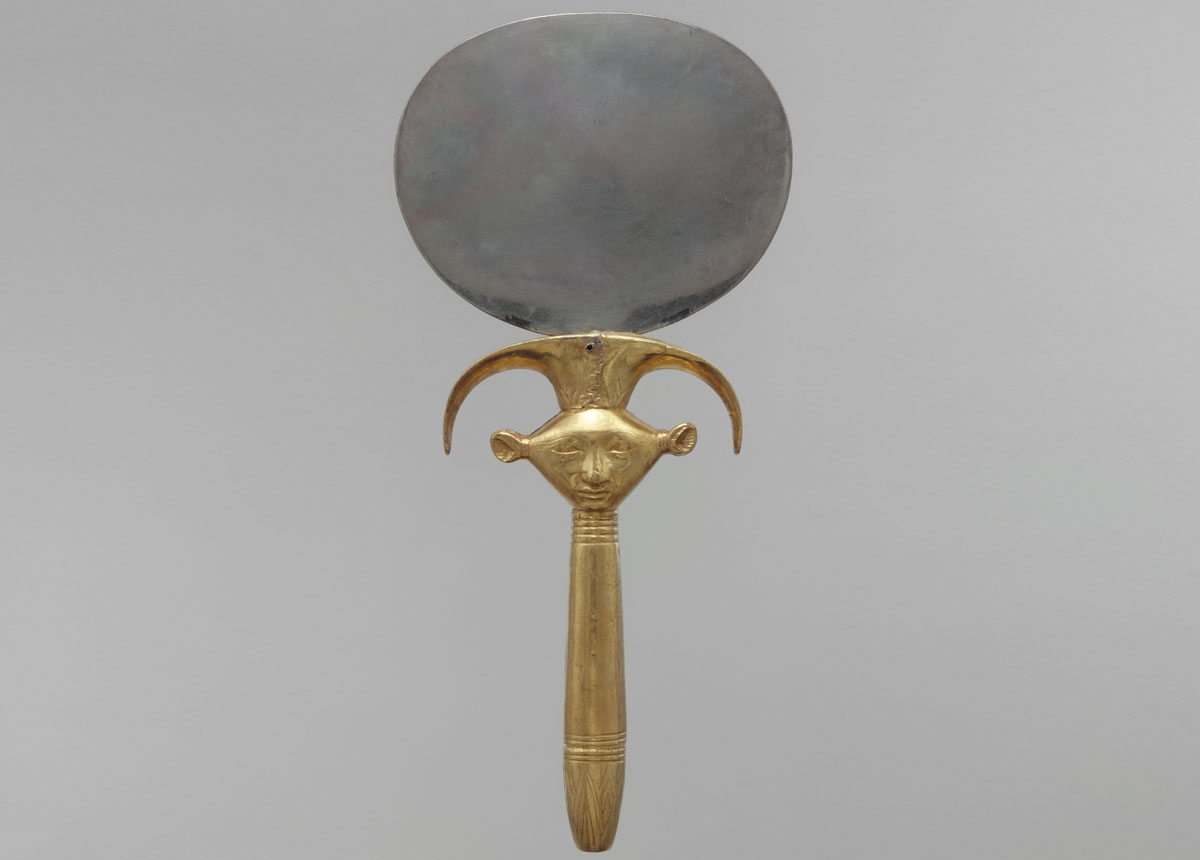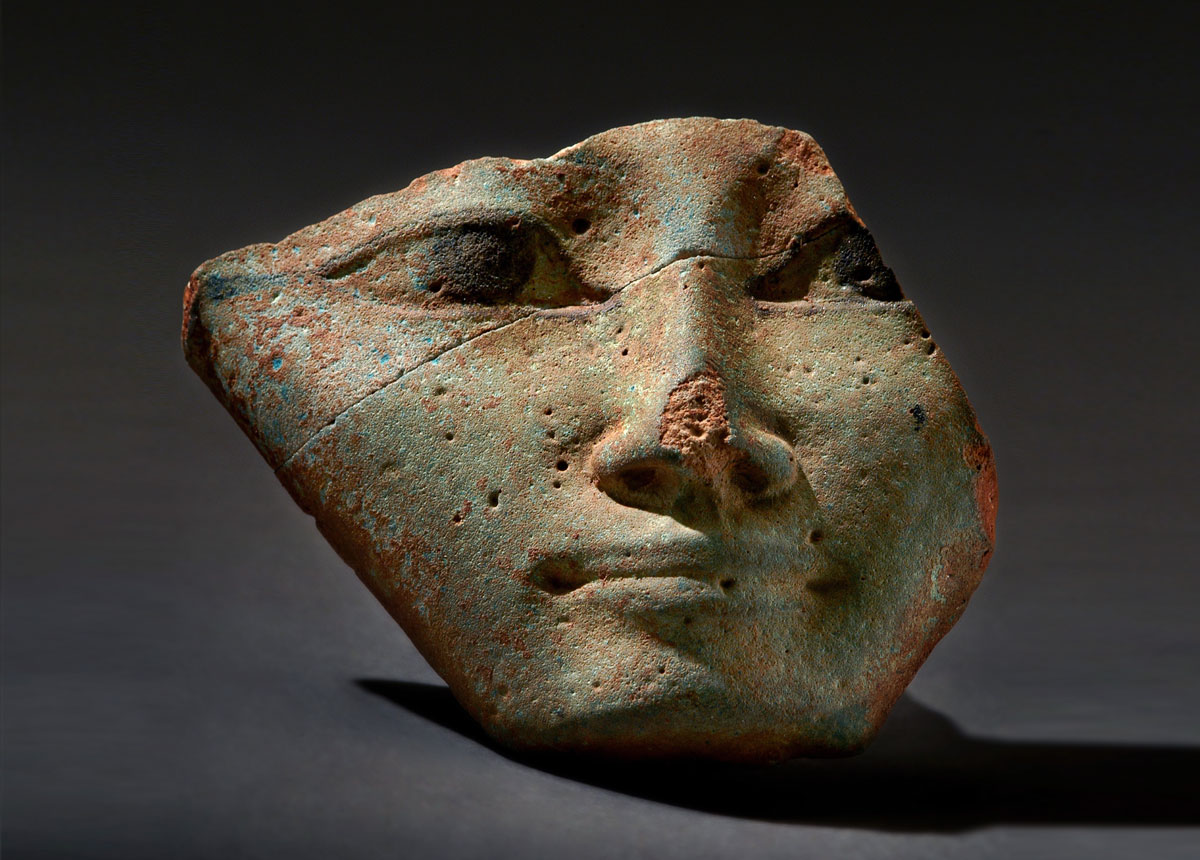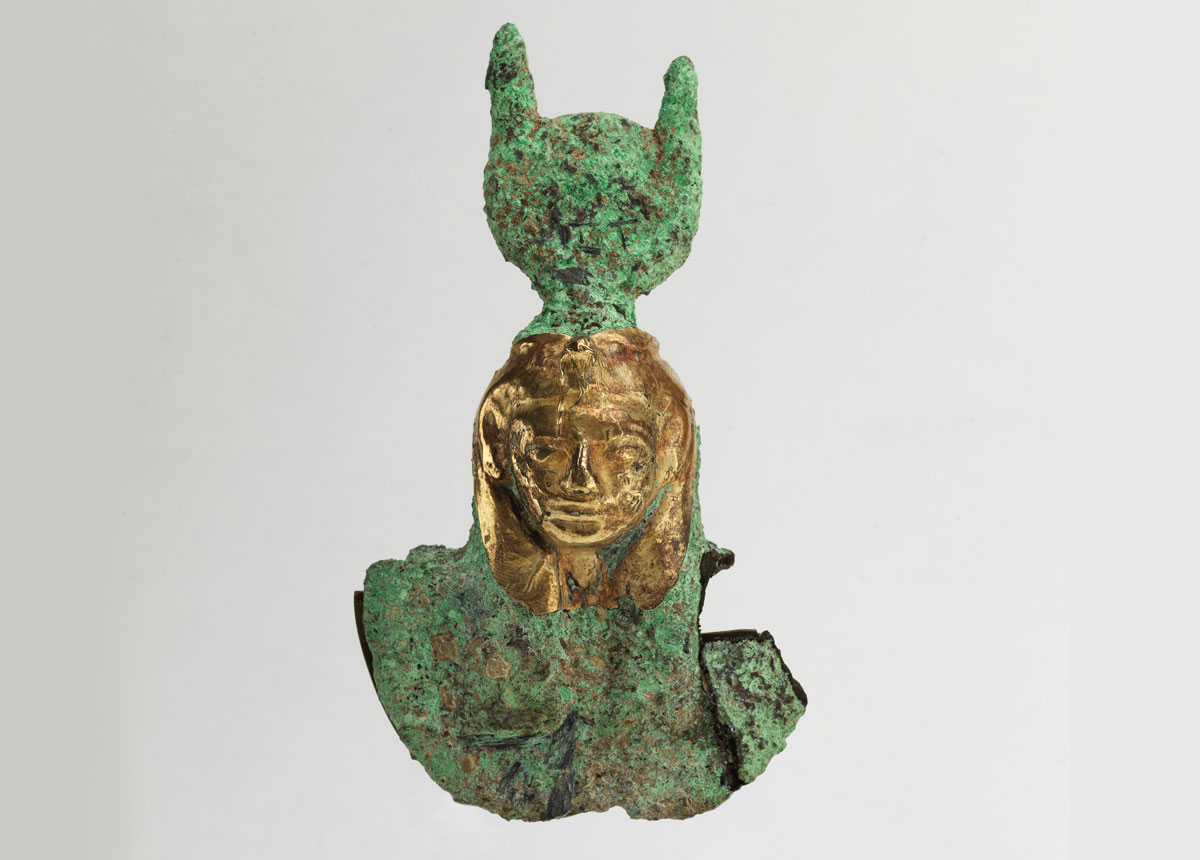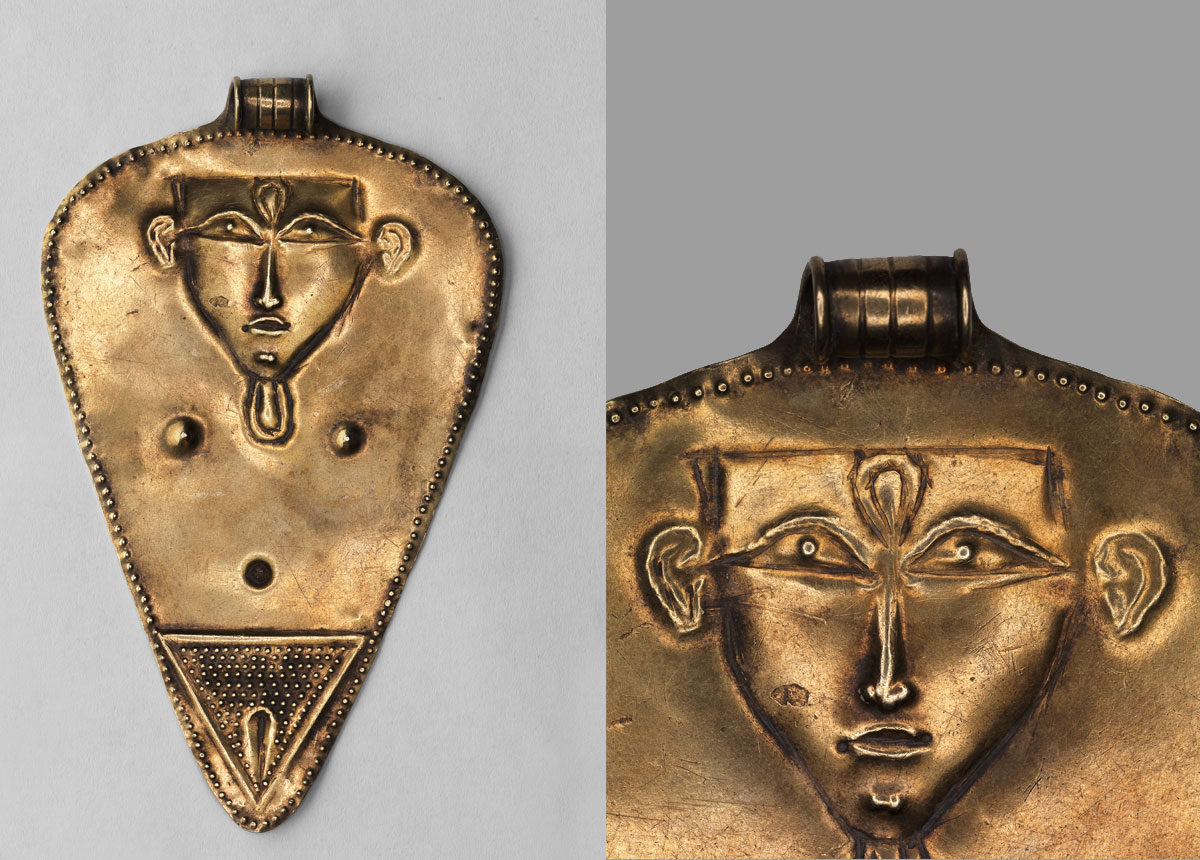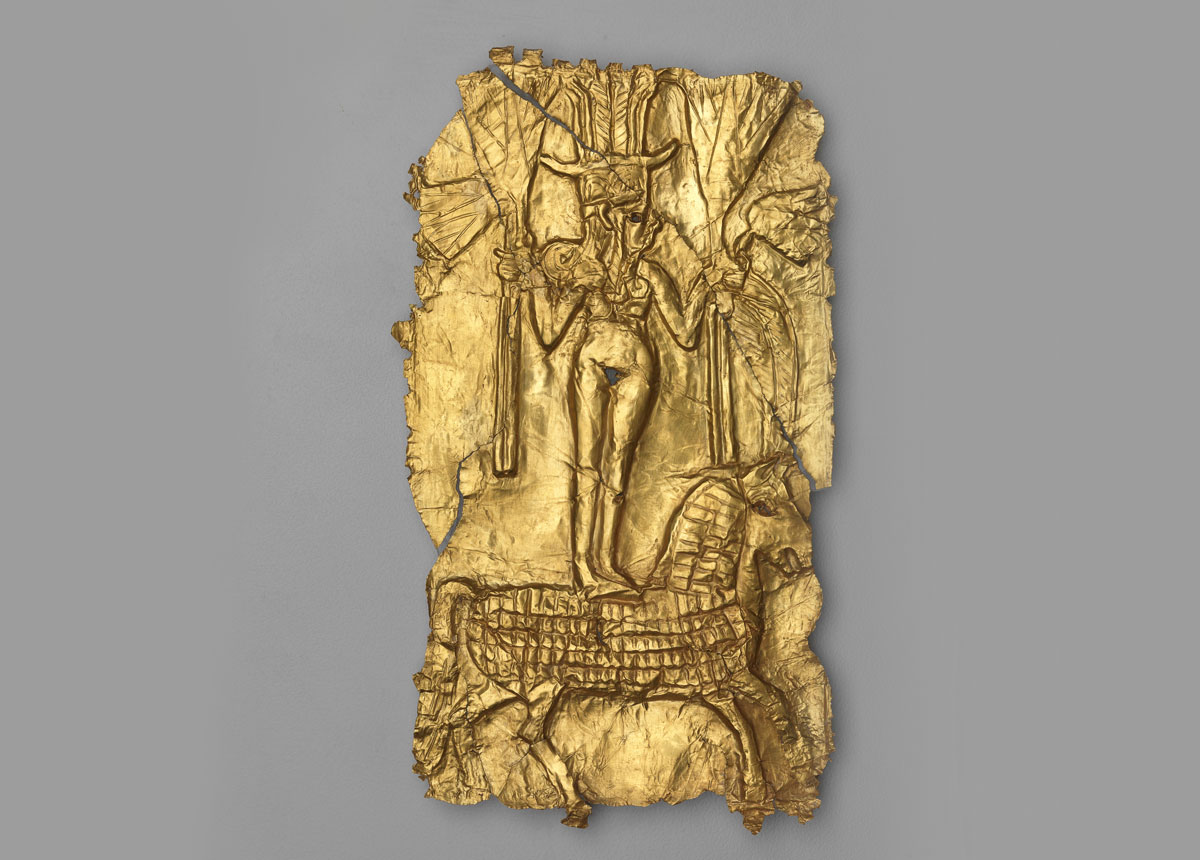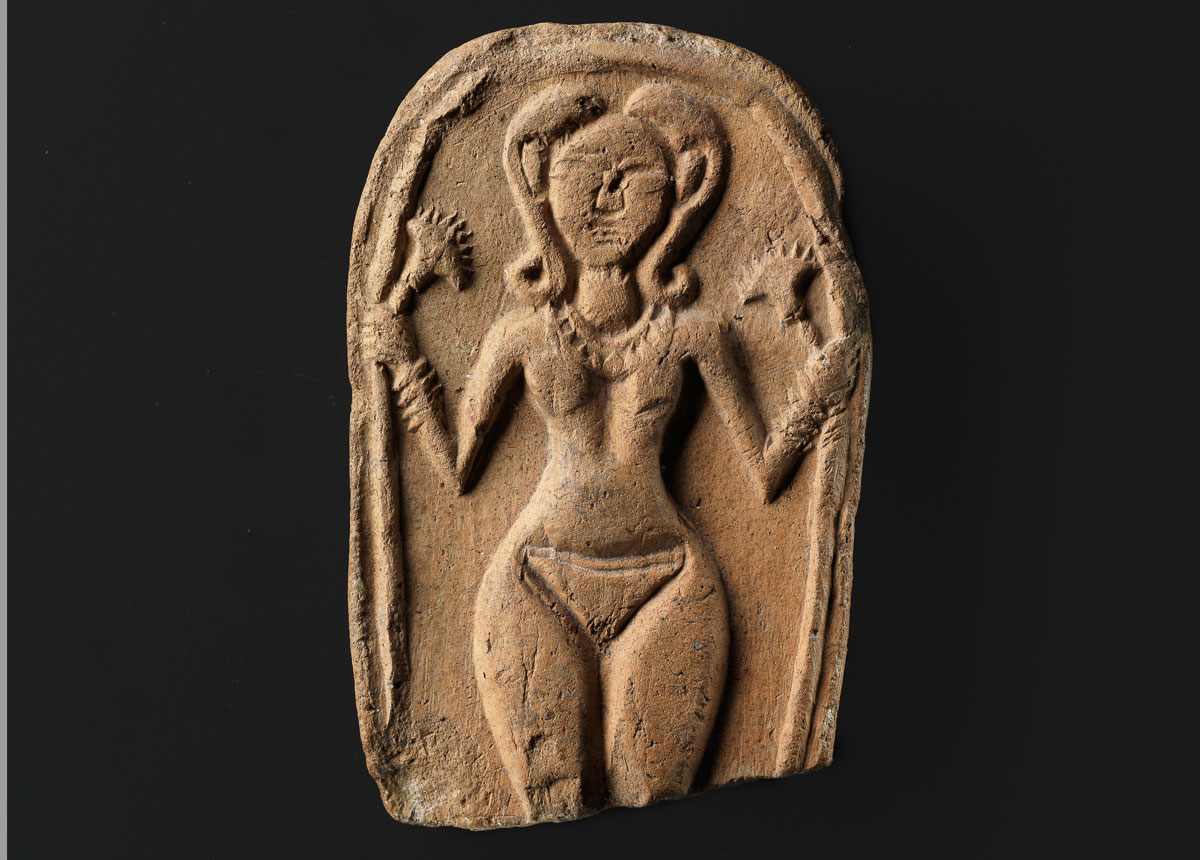Hathor, Mistress of the Treasures of Foreign Lands
The antiquity and complexity of the Egyptian goddess Hathor are reflected in her
numerous roles, the diverse forms she assumed, and her many cult centers. The most
distinctive symbol of the goddess was a frontal human head with cow’s ears. This
symbol decorated objects associated with her cult, such as stone capitals, musical
instruments, and mirrors, and was the most common representation of the goddess
in Canaan.
The importance of Hathor outside Egypt is related to her
... Read More » From the Catalogue »


